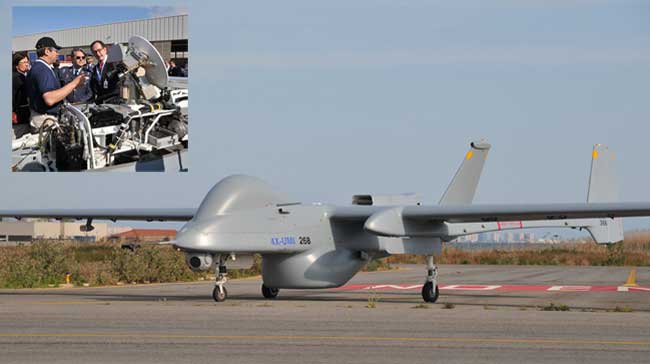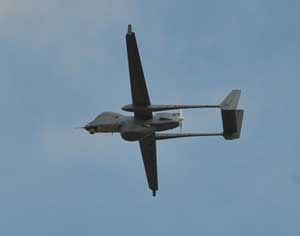
A European project designed to prove the feasibility of operating unmanned aerial systems in non-segregated airspace completed six missions flown form the Spanish Air Force base San Javier air base on 24 April. Defense-Update reports.
The test was conducted by an international consortium led by Spain’s Indra, in cooperation with AT-One, CIRA, SES ASTRA and Thales Alenia Space. The project demonstrated the safe operation of RPAS in non-segregated airspace using satellite communications.
The test involved a satellite communications link using Ku-band capacity, provided SES Techcom. The link established immediately after take-off, while the aircraft was still in segregated airspace, before it entered class-C airspace at 20,000ft under the supervision of Spanish air navigation service provider Aena. The sat-link provided reliable command and control, Air Traffic Control and Mission data transfer.
During the trial, a manned aircraft from the Spanish air force academy approached the UAS, simulating frontal and 90˚ collision trajectories. “The pilots of the two aircraft followed the separation instructions issued by the air traffic controllers, demonstrating the safe operation of remotely-piloted aircraft, even in an emergency situation,” the EDA, ESA and Indra said in a joint statement.
The missions flown under the European Space Agency – European Defense Agency (ESA-EDA) sponsored ‘Demonstrating Satellites enabling the Insertion of RPAS in Europe’ (DeSIRE) initiative. Other members collaborating in the program included ThalesAleniaSpace and AT-one (an European Economic Interest Group consisting of Dutch Aerospace Laboratory NLR and German Aerospace Centre DLR). Other partners, included GUCI (Spanish “Guardia Civil”) and AENA (Aeropuertos Españoles y Navegación Aérea).
The initiative followed another ESA study (ESA SINUE) during which SES was already partnering with INDRA, the Spanish information technology and defense systems company.
SES operates a fleet of 52 geostationary satellites. The company provides satellite communications services to broadcasters, content and internet service providers, mobile and fixed network operators and business and governmental organisations worldwide.
Check the test summary on the ESA Page.
Source: Defense-Update


















